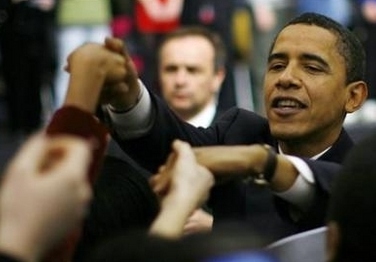A harder look at Obama, 'post-SNL'?
(Agencies)
Updated: 2008-03-05 15:27
Updated: 2008-03-05 15:27
NEW YORK -- Life imitating art or just a coincidence? A study of campaign coverage found the media took a sharper look at Barack Obama the week after "Saturday Night Live" spoofed journalists enthralled by his candidacy.
The NBC comedy show on Feb. 23 opened with a mock debate where journalists were rough on Hillary Clinton while being starry-eyed about Obama. It matched complaints the Clinton campaign had made -- and she even referenced the comedy skit during a real debate last week.
|
|
During the week, Obama was the dominant person in 69 percent of presidential campaign stories, according to a study by Project for Excellence in Journalism. That's the biggest percentage one candidate had received in any week this year.
Many of the stories took a tough look at Obama, such as a Feb. 25 ABC "World News" study on his Illinois legislative record and a "CBS Evening News" report on his career three nights later.
It's hard to say whether "SNL" acted as a de-facto assignment editor, since some of the stories were probably being prepared before the NBC show aired, but it did seem to crystallize a thought that had been percolating, said Mark Jurkowitz, the project's associate director.
"There were a lot of factors at play," Jurkowitz said. "But there's no question the skit, if nothing else, was perfectly timed."
With no primaries last week, news outlets had the time to look at other stories, as well as the time to look at their own performance. The Washington Post, New York Times and ABC's "Good Morning America" all ran stories addressing whether the media has been fairly covering the Obama-Clinton contest.
"Saturday Night Live" this past weekend opened its show with another fake debate where journalists played easy for Obama. This time, the skit ended with an appearance by Clinton herself.
The project studies 48 different media outlets, including newspapers, Web sites and television networks, as part of its examination of campaign coverage.
|
|
|
||
|
||
|
|
|
|
